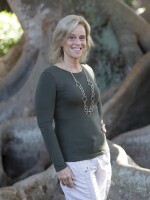Global, regional and local stressors have significantly contributed to the decline of coral reef ecosystems, most notably in Florida and the wider Caribbean region.
Living coral cover (the proportion of the reef covered in living coral) on Florida’s coral reef is currently between 1% and 5%, dramatically less than just 40 years ago when it was more than 30%.
To date, Mote Marine Laboratory has already restored 170,000 corals to depleted reefs.
Now, a new $7 million dollar grant from the National Oceanic and Atmospheric Administration will help researchers develop new ways to spur growth.
Mote scientist Jason Spadaro, manager of Mote's Coral Reef Restoration Research program, says it's unlikely Florida's reef can recover on its own. That means it’s up to scientists to give nature a hand.

"What we've got right now is a fossil reef with very little coral on it and there are too few mommy and daddy corals to actually come together and make baby corals," Spadaro said.
Projects include growing corals underwater and on land at Mote's new Aquaculture Research facility just outside of Sarasota.
Researchers will also grow Caribbean king crabs. Spadaro says the crustaceans are large native reef herbivores that can help remove algae.
Mote will be the first institution to release cultured Caribbean king crabs on Florida’s coral reef to support and facilitate coral reef restoration efforts.
"They'll eat the stuff that's really noxious, that's calcified,” Spadaro said. “They're very helpful when we're trying to control algae growth on the reef that would otherwise compete with the corals that we're putting out and slow down their growth, or kill them, or remove their ability to reproduce."
The effort includes the production and out planting of 242,000 coral fragments and 34,000 Caribbean king crabs over the four-year project duration.
“Coral reef restoration is still essentially in its infancy,” said Spadaro. "But we believe that this project and the ambitious objectives we have set, represent a science-based and scalable pathway to transformative and, more importantly, lasting landscape scale functional restoration of the most biodiverse and socio-economically valuable habitat and natural resource in Florida.”




